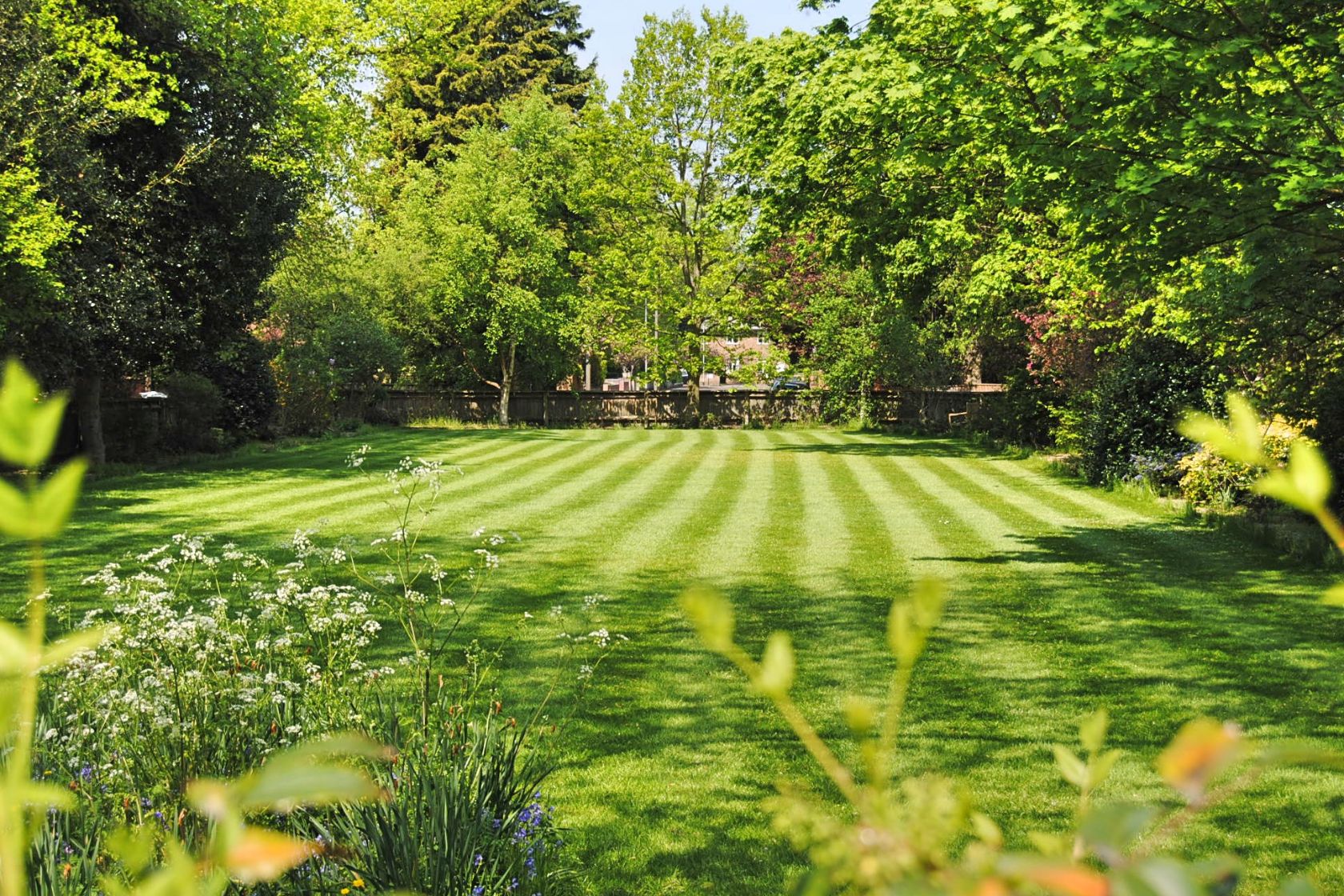Taking care of your lawn might seem like a big task, but it’s easier if you understand the basics. A healthy lawn not only looks great but also provides a safe place for kids and pets to play. Plus, it improves the overall appearance of your home and can even increase its value.
Lawn care involves different tasks throughout the year. Every season has specific needs, from fertilizing in the spring to raking leaves in the fall. Knowing when and how to perform these tasks will help keep your lawn green and lush. It’s important to understand common lawn problems such as weeds, diseases, and pests so you can tackle them early before they get out of hand.
In addition to regular maintenance, using proper techniques for mowing, watering, and fertilizing can make a big difference. Whether you’re aiming to fix dead patches or just want a beautifully manicured lawn, following some easy tips and strategies will lead you to success. Lawn care doesn’t have to be overwhelming. With a bit of know-how, you can enjoy a vibrant, healthy yard throughout the year.
Understanding Lawn Care Basics
Importance of Lawn Health
Having a healthy lawn is more than just about looks. A well-maintained lawn helps prevent soil erosion by keeping the soil in place with its root system. Grass also acts as a natural air filter, trapping dust, dirt, and other particles. This means cleaner air around your home. Moreover, a thick, healthy lawn can help reduce noise levels by absorbing sound. In addition, a healthy lawn provides a safe and comfortable place for outdoor activities.
Seasonal Lawn Care Overview
Caring for your lawn varies with each season. In the spring, focus on cleaning up debris from winter and applying fertilizers to help the grass grow. Summer care involves regular watering and mowing to keep your lawn green and healthy. In the fall, it’s important to rake leaves and apply a winterizing fertilizer to prepare your lawn for the cold months. Winter care is mostly about protecting the lawn from heavy foot traffic and snow damage.
Identifying Common Lawn Problems
Recognizing common lawn problems early can save you time and effort. Weeds like dandelions and crabgrass can crowd out your grass if not dealt with quickly. Lawn diseases such as brown patch and fairy ring can create unsightly spots and damage the grass. Pests like grubs and moles can destroy roots and create holes in your lawn. By identifying these issues early, you can apply the right treatments and keep your lawn looking great.
Essential Lawn Maintenance Tips
Proper Mowing Techniques
Mowing your lawn correctly is crucial for its health. Always keep your mower blades sharp to ensure a clean cut. Dull blades can tear the grass, making it more susceptible to disease. Set your mower to the right height—cutting too short can stress the grass and promote weed growth. Generally, aim to cut no more than one-third of the grass height at a time. Remember to vary your mowing pattern each time to avoid compacting the soil and damaging the grass.
Effective Watering Strategies
Watering your lawn effectively is key to maintaining its health. Early morning is the best time to water because it allows the grass to dry before evening, reducing the risk of fungal diseases. Water deeply but infrequently to encourage deep root growth. Aim for about an inch of water per week, including rain. Using a rain gauge can help you measure the amount of water your lawn gets. Avoid shallow watering, as it can lead to weak roots and unhealthy grass.
Best Practices for Fertilizing
Fertilizing your lawn provides essential nutrients that the soil might lack. Choose a fertilizer that’s appropriate for your grass type and follow the instructions carefully. Too much fertilizer can burn your lawn, while too little might not provide the nutrients it needs. The best times to fertilize are usually in the spring and fall when the grass is actively growing. Slow-release fertilizers are a good choice as they provide a steady supply of nutrients over time. Remember to water your lawn after applying fertilizer to help it absorb the nutrients.
Seasonal Lawn Care Guide
Spring Lawn Care Tasks
Spring is the perfect time to get your lawn ready for the coming months. Start by raking up any leaves or debris left over from the winter. This helps the grass breathe and prepares it for new growth. Next, consider aerating your lawn to improve soil structure and allow water and nutrients to reach the roots more effectively. Spring is also a good time to reseed any bare patches. Use a high-quality grass seed that matches your existing lawn. Finally, start your regular mowing schedule, but make sure not to cut the grass too short.
Summer Lawn Care Tips
Summer can be tough on lawns due to the heat and less frequent rain. To keep your lawn healthy, water it early in the morning when temperatures are cooler to reduce evaporation. Aim to water deeply and less frequently to encourage deep root growth. Also, raise the cutting height of your mower to keep the grass a bit longer. This provides shade for the soil and reduces water loss. Regularly check for weeds and pests, as they can become a problem during summer. Address any issues promptly to prevent them from spreading.
Fall and Winter Lawn Care Practices
Fall is the time to prepare your lawn for the colder months. Begin by raking leaves and removing any debris. This helps prevent mold and keeps your lawn looking tidy. Fall is also a good time to fertilize your lawn, as this provides essential nutrients that will help it survive the winter. Consider overseeding to fill in thin areas and promote dense growth. As winter approaches and the grass growth slows down, reduce the frequency of mowing. For the final cut of the season, mow the grass a bit shorter to reduce the risk of snow mold.
Preventing and Handling Lawn Issues
Common Weeds and How to Manage Them
Weeds can take over your lawn quickly if not managed properly. Common weeds like dandelions, crabgrass, and clover can compete with grass for nutrients and water. One way to prevent weeds is by maintaining a healthy lawn. Healthy grass can crowd out weeds and reduce their growth. If you notice weeds starting to appear, pull them out by hand or use a weed killer designed for lawns. Applying a pre-emergent weed control in the spring can also help prevent summer weeds from sprouting.
Lawn Diseases to Watch Out For
Lawn diseases can cause significant damage if not addressed. Common diseases include brown patch, dollar spot, and rust. These diseases often appear as discolored patches or spots on your lawn. To prevent lawn diseases, maintain good lawn care practices, such as proper watering and mowing. If you notice signs of disease, consider applying a fungicide and take steps to improve air circulation and drainage in your lawn.
Dealing with Pests and Unwanted Critters
Pests can cause a lot of harm to your lawn if left unchecked. Grubs, chinch bugs, and armyworms are some common lawn pests. Regularly inspect your lawn for signs of pest damage, such as brown or chewed grass. You can use natural or chemical insecticides to control pests. Additionally, attracting beneficial insects like ladybugs can help keep harmful pests in check. For larger critters like moles or rabbits, consider using humane traps or repellents to protect your lawn.
Conclusion
Maintaining a beautiful lawn doesn’t have to be a daunting task, even for busy homeowners. By following these seasonal care tips and addressing issues promptly, you can keep your grass healthy and vibrant all year round. Remember to choose the right tools and practices to make your job easier and more effective. Each season offers unique challenges, but with a little effort and attention, you can enjoy a lush, green lawn.
If you find yourself needing extra help, don’t hesitate to reach out to the lawn care specialists at Trimming Edge Lawn Care LLC. We offer a range of services to make lawn care easier for you. Contact us today to schedule a consultation and take the first step towards a beautiful, hassle-free lawn!


Comments are closed